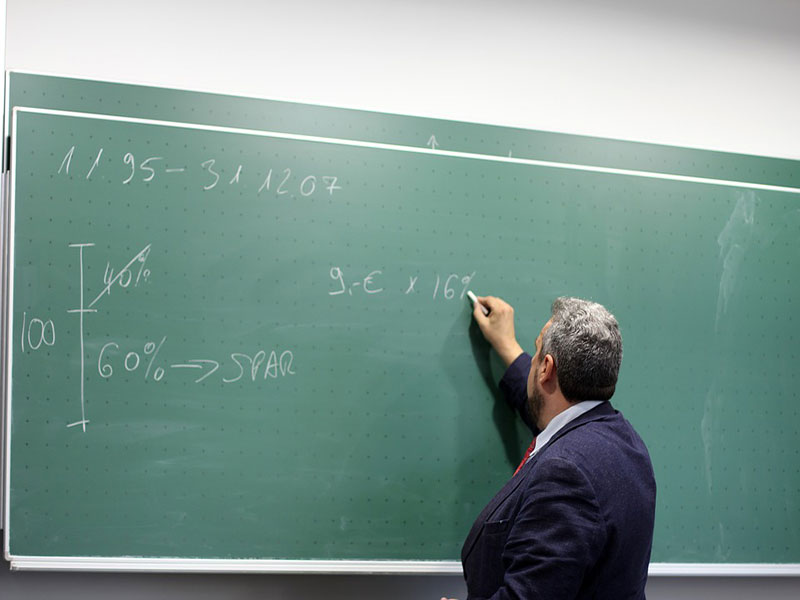S Gayathri, senior technical specialist – education at CARE India.
While working with marginalised children, one of the biggest barriers to effective learning seems to be the preconceived notion prevalent amongst teachers that students from marginalised communities are less capable. It is often seen that a teacher’s perspective directly influences their thoughts, behaviour, attitude and aspiration for the children they teach.
For teachers to practise inclusion in their classrooms, there is a need for them to challenge their existing stereotypical notions around innate biases around gender, social norms, socio-economic status and disability. The teacher development process needs to inculcate in teachers an inclusive, participatory and learner centred approach.
It is important for teachers to have an objective outlook to make the school and classroom processes more democratic and learner centred. This can be done through effective use of different platforms in the school like morning assembly, school committee, library, sports. These platforms can play a key role in providing an opportunity for all children to participate, breaking inhibitions and fostering a collective sense of ownership and enjoyment amongst children.
For the classroom process to be inclusive, there is a need for teachers to empathise with the needs of the learner and be able to link concrete experiences of children to curricular concepts. Teachers need to be encouraged to create and use Teaching/Learning Materials (TLMs) from their immediate context. This not only opens up an exploratory way for looking into the world as a learning aid for children, but also breaks the myth that learning can only happen in a resourceful setting. Efforts made by teachers to learn and speak the mother tongue of their students strike an emotional resonance with children. This helps children value different languages; and understanding languages provides a strong connect with people, culture and identity. When a teacher appreciates linguistic diversity within a classroom, it establishes a strong multilingual environment, creating a strong precedence for children to see multilingual diversity as an asset. It encourages more openness in children to value each of their own linguistic and cultural identities.
In order to foster inclusion, teachers must be able to appreciate how different children perceive reality in their own way based on their individual experiences and context (economic, social and cultural). There is a need for children to understand how different norms, beliefs and practices have evolved in different contexts, and there is no absolute way of seeing them as right or wrong. A teacher’s usage of anecdotes and examples break away from presenting one mainstream reality. This goes a longer way in helping young minds become more tolerant in a democratic society and understand how different people have adapted themselves to different physical, social and economic realities.
A teacher’s acceptance and acknowledgement of plurality and diversity helps children build a strong identity where they do not ape each other into a mainstream identity. Such a strong acceptance of plurality helps children appreciate and navigate more comfortably in a global multicultural world with lesser prejudice.
While designing learning experience in one’s classroom, a teacher needs to do it equitably and refraining from displaying a ‘one size fits all’ attitude. This becomes possible when there is an acknowledgment that children learn differently and at different paces. The teacher needs to have an understanding of the differences present in her classroom, adopt an attitude that indicates that it is ok to have differences, and has the tools, pedagogy and assessment methods that can accommodate the differences.
In a country like India, where our public schools mostly cater to first generation learners, there is a need for teachers to understand the reality of these children to be able to address their social, emotional and learning needs. Hence, it is important for a teacher to look beyond the textbooks and have clarity on the curricular goals that need to be achieved. This provides her with a flexibility to adopt different pathways to attain the curricular goal and not restrict herself to the textbook, if it fails to address the specific learning needs of the children. Having an understanding of the different grouping methods, encouraging peer learning and using assessment methods that enable learning help teachers to address the differences in a classroom.
For classrooms and schooling process to be inclusive, a teacher needs to be empowered and empathetic. It is important to not restrict schooling and learning to set standards as it is easy for a scale system to monitor. There is a need to acknowledge that for a teacher to practise inclusiveness and address inclusion in her classroom, she/he needs motivation, handholding and acknowledgement to persevere her efforts. This demands sensitivity in the way we appraise our teachers—moving away from outputs and outcomes and seeing education more as a developmental endeavour.
A country needs to make this long-term investment for its teachers so that they are well equipped to create future citizens who have a strong individual identity and strive for collective harmony.
Also Read:Youth Impact Inclusion Summit for Innovation & Sustainable growth
